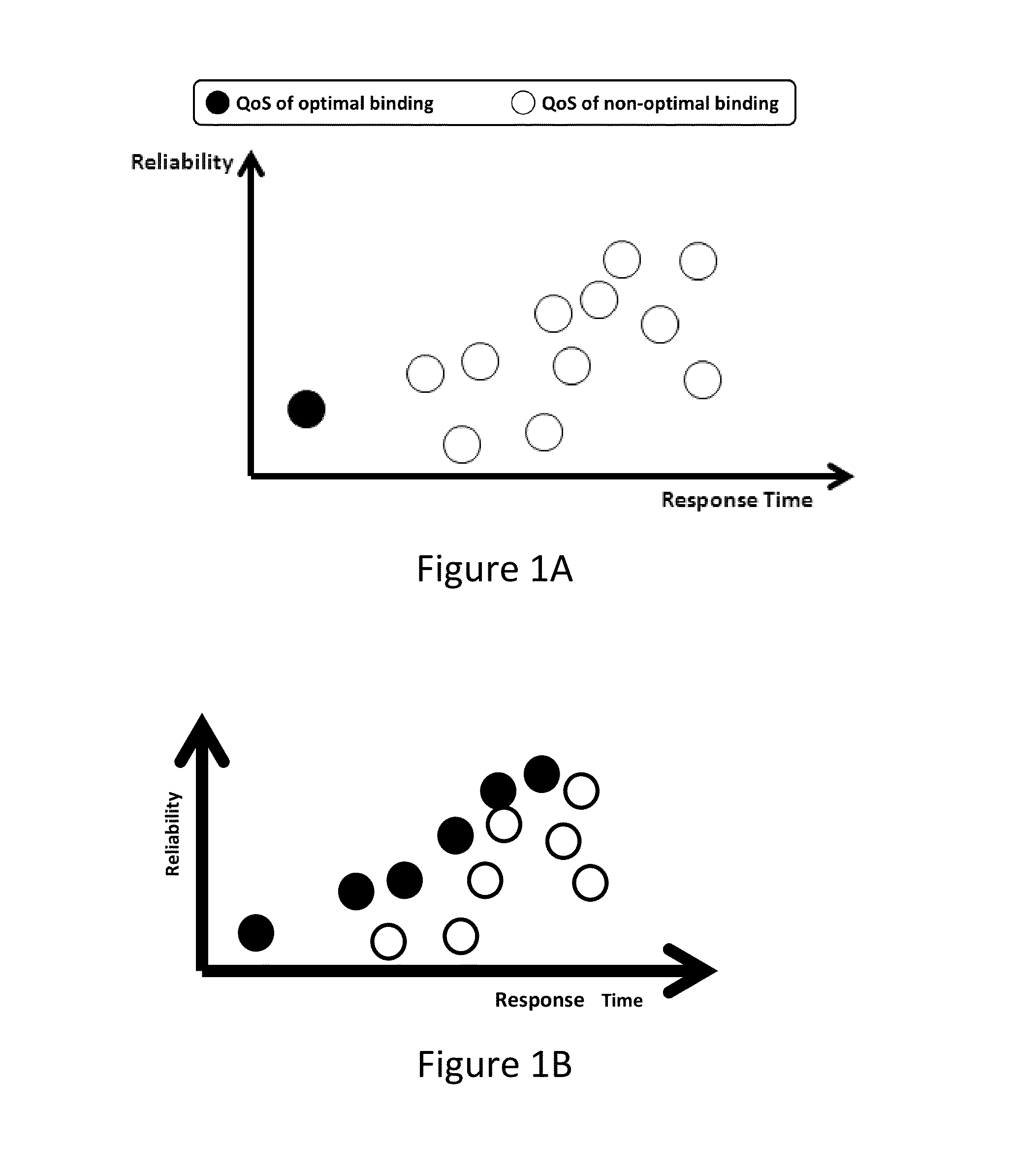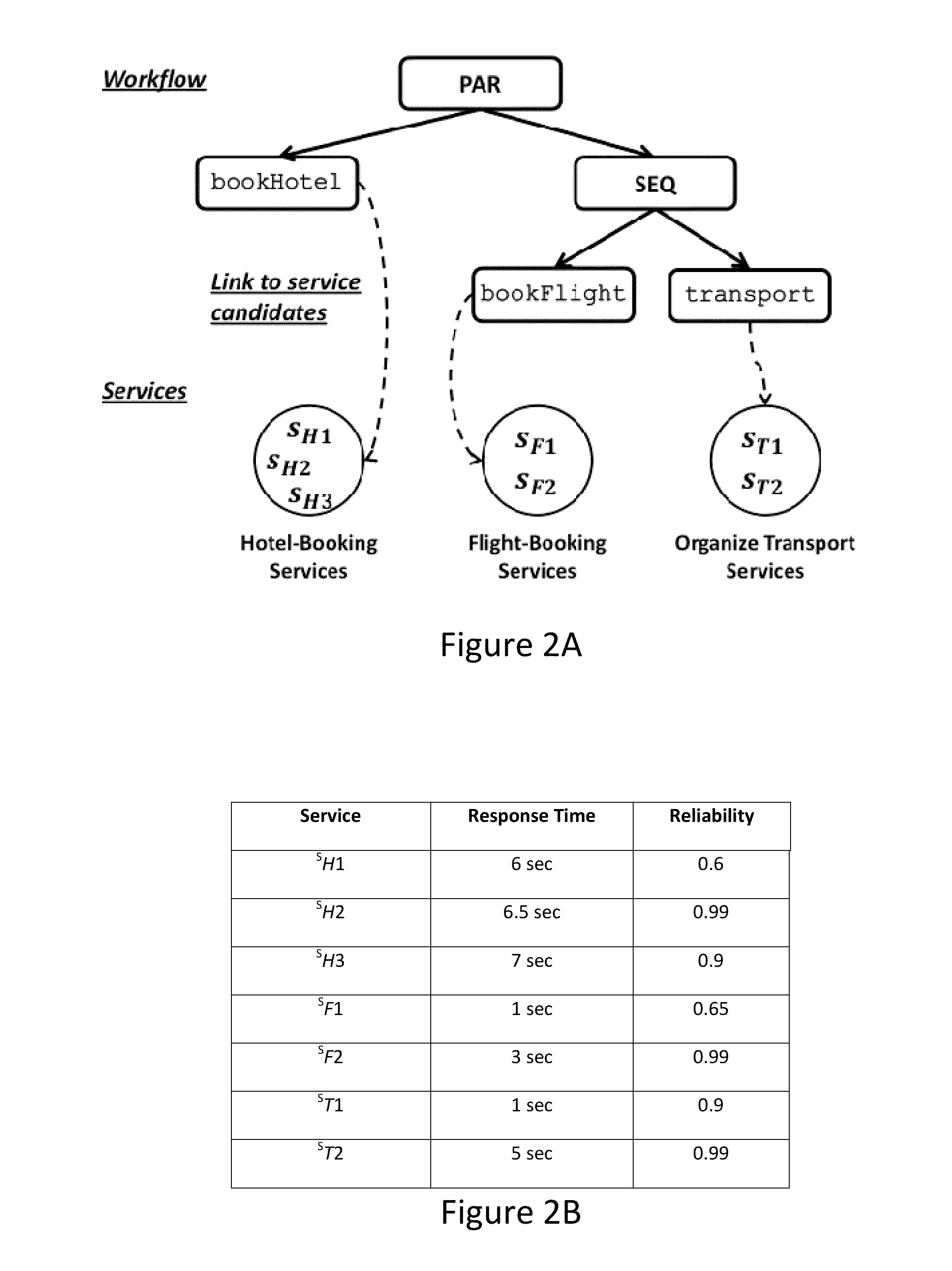Method for multi-objective quality-driven service selection
a service selection and multi-objective technology, applied in the field of multi-objective workflow optimization, can solve the problems of different cost and/or quality properties for the entire workflow, difficult to capture users' real preferences in a utility function, and the same binding will not represent the optimal tradeoff between different cost and/or quality properties for all possible users, so as to achieve arbitrary sorting and filtering operations, reduce response time, and increase overall efficiency
- Summary
- Abstract
- Description
- Claims
- Application Information
AI Technical Summary
Benefits of technology
Problems solved by technology
Method used
Image
Examples
example 2
[0085]One assumes the need to go to a conference and one has to book a hotel close to the conference, a flight, and a transportation from the airport to the hotel. Let bookHotel, bookFlight, transport be simple tasks, representing booking a hotel room, booking a flight, and organizing transport respectively. One can book a flight and the hotel room in parallel since conference dates and location are fixed. Booking a transport from airport to the conference location requires however to know the destination airport. Then Wre=PAR> describes a corresponding workflow. The workflow is represented as tree in FIG. 2A. Wre has the subworkflows bookHotel and SEQ.
[0086]One will use the symbol Wre throughout the remainder of the present description to refer to this workflow.
Definition 4. Splitting Workflows into Fragment
[0087]The function Split(W) for splitting a complex workflow W into two fragment workflows is introduced The result is a two tuple 1,W2>=Split(W) where W1 is the last child work...
example 3
[0088]It is 1, W2>=Split(Wre) where W1=SEQ, and W2=PAR.
Definition 5. Nested Fragments
[0089]For a given workflow W, one calls the set containing W, its fragments, the fragments of its fragments etc. the set of nested fragments. One denotes the set of nested fragments by the function NFrags and provide a formal, recursive definition: If W is a simple task, one has NFrags(W)={W}. If W is complex and 1, W2>=Split(W) then NFrags(W)=({W,W1,W2})∪NFrags(W1)∪NFrags(W2))\{∈} (so one do not take into account the empty task).
example 4
[0090]The set NFrags(Wre) contains the elements Wre, PAR, bookHotel, SEQ, SEQ, bookFlight, and transport.
Definition 6. Binding
[0091]For a workflow W, denote by T⊂NFrags(W) the subset of nested fragments that are simple tasks. Every simple task is associated with a set of candidate services. A binding for W is a total function binding:T→. It maps every task T to exactly one of its candidate services. A workflow with a binding can be executed. By (W) one denotes the set of all possible bindings for W.
Remark 1.
[0092]Note that according to our definition, a binding for a workflow W is at the same time a binding for every nested fragment of W.
PUM
 Login to View More
Login to View More Abstract
Description
Claims
Application Information
 Login to View More
Login to View More - R&D
- Intellectual Property
- Life Sciences
- Materials
- Tech Scout
- Unparalleled Data Quality
- Higher Quality Content
- 60% Fewer Hallucinations
Browse by: Latest US Patents, China's latest patents, Technical Efficacy Thesaurus, Application Domain, Technology Topic, Popular Technical Reports.
© 2025 PatSnap. All rights reserved.Legal|Privacy policy|Modern Slavery Act Transparency Statement|Sitemap|About US| Contact US: help@patsnap.com



